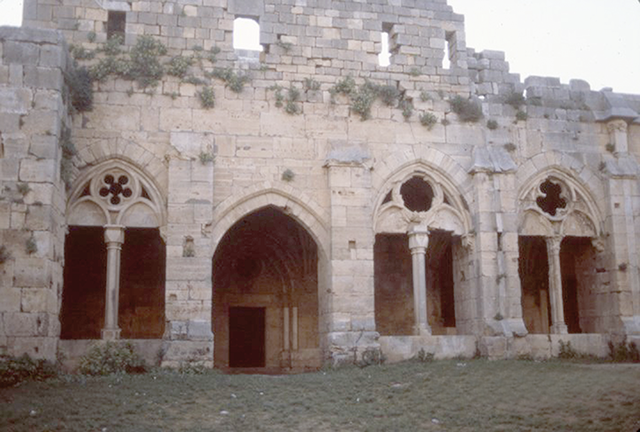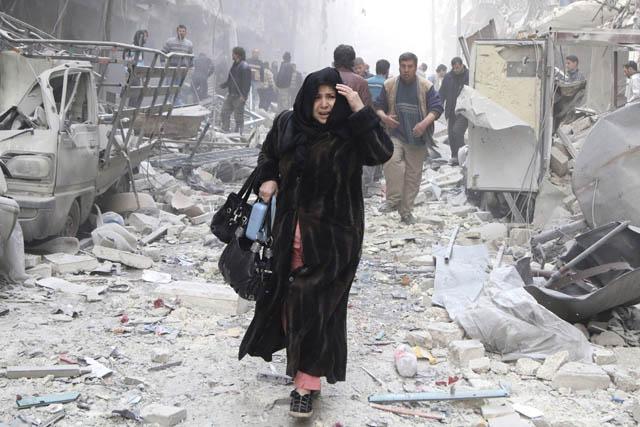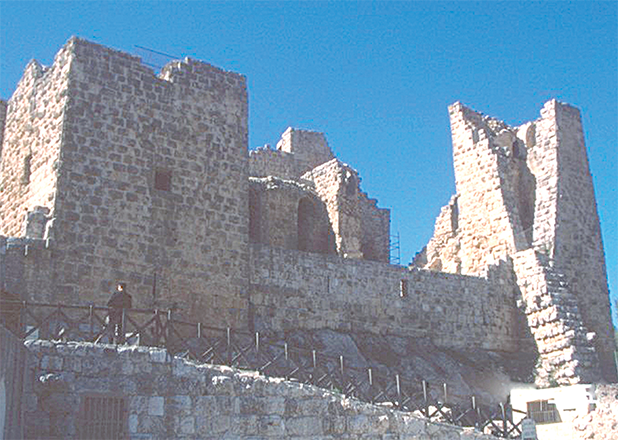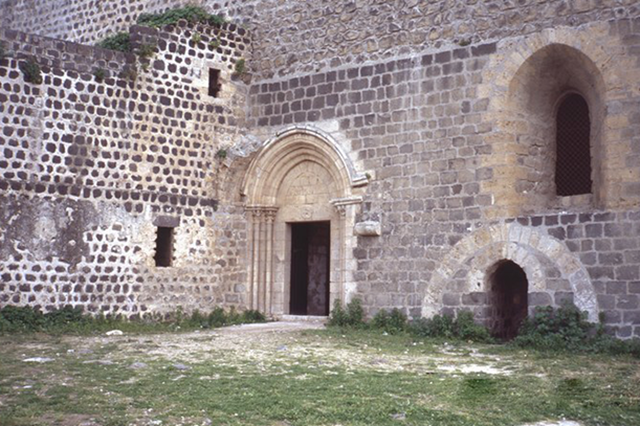You are here
Crusaders legacy: delving into Krak des Chevaliers
By Saeb Rawashdeh - Sep 29,2024 - Last updated at Sep 29,2024

The Hall of Knights inside the Crusaders' stronghold of Krak des Chevaliers (Photo courtesy of ACOR)
AMMAN — During the First Crusade, four states were established: the County of Edessa (1097 – 1150), the Principality of Antioch (1098 – 1287), the County of Tripoli (1102 – 1289) and the Kingdom of Jerusalem (1099 – 1291).
The Kingdom of Jerusalem covered southern Levant and the western parts of modern Jordan. The other northern states covered Lebanon, western parts of Syria and south-eastern Turkey.
Modern historians commonly refer to the four states as "Crusader states", and use "Franks"' for the European settlers, including Crusaders, other incomers, and their descendants. Franks was a common name used in the Byzantine and Arabic sources, although settlers were ethnically heterogeneous.
The mediaeval ethnonyms reflect the settlers' two characteristics that differentiated them from the indigenous population — their language and faith. The Franks were predominantly French-speaking Roman Catholics while the natives were predominantly Arabic – or Greek-speaking Muslims, Christians of various denominations and the Middle Eastern Jews.
The late German Professor of Crusades Hans Eberhard Mayer believed this reflected that only Latins held complete political and legal rights in the kingdom, and that the major division in the society was not between the nobility and the common people, but between the Franks and the indigenous peoples. Despite sometimes receiving homage from, and acting as regent for, the king held no formalised overlord status, and those states remained legally outside the kingdom, Mayer maintained.
The Krak des Chevaliers was one of the most important fortresses built during Crusades. The castle sits atop a 650-metre-high hill east of Tartus, on the other side of the Homs Gap, 27 kilometres away, was the 12th-century castle of Gibelacar. The route through the strategically important Homs Gap connects the cities of Tripoli and Homs
The castle was finished in the 13th century and became a concentric fortress. This phase created the outer wall and gave the castle its current appearance. The stronghold was also called Krak de l'Hospital as it became a head quarter for the Hospitaller knights in the 1140’s.
The Hospitallers began as a religious order that took care of sick and hosted Christian pilgrims. However, after military successes of the First Crusade, Hospitallers turned into a military order.
A papal bull from between 1139 and 1143 may indicate the order hiring people to defend pilgrims. Other known military order were the Templars who also protected pilgrims.
Historian Jonathan Riley-Smith maintains that the Hospitallers effectively established a "palatinate" within Tripoli and the property included castles with which the Hospitallers were expected to defend Tripoli. The Krak des Chevaliers was the first line of defence to the Count of Tripoli as crusaders never established control over Homs. The Hospitallers were given four other castles along the borders of the state, which allowed the order to dominate the area.
Furthermore, the order's agreement with Raymond II stated that if he did not accompany knights of the order on a campaign, the spoils belonged entirely to the order, and if he was present during the campaign, it was split equally between the count and the order. Also, Raymond II could not make peace with the Muslims without the permission of the Hospitallers, which made them the state within the state.
The Hospitallers turned Krak des Chevaliers into an administrative centre and they strengthened the fortification during their rule of the area.
This work lasted until 1170, when an earthquake damaged the castle. An Arab source mentions that the quake destroyed the castle's chapel, which was replaced by the present one.
Climate also played an important role in the history of the fortress as drought conditions between 1175 and 1180 forced the Crusaders to sign a two-year truce with the Muslims, but without Tripoli included in the terms.
In 1180, Saladin ventured into the County of Tripoli, ravaging the area. However, Saladin could not take any of the major fortresses where crusaders hid in a relative safety.
The Battle of Hattin in 1187 had a major impact on crusaders castles from Montreal and Karak, to the Krak des Chevaliers. A defeat had a long-term negative effect on crusaders.
The Hospitaller castles of Belmont, Belvoirand Bethgibelin fell into Muslim hands.
Another earthquake struck in 1202, and it may have been after this event that the castle was remodelled. The last twenty years of Crusaders' rule was marked by a decline (1250 until 1271).
Mamluk Sultan Baibars took Krak des Chevaliers in 1271.
"The castle retains many of the architectural elements dating to the Seljuks, the Crusaders and Mamluks. Seljuk buildings consisting of the eastern entrance of the inner fortress and the emergence of the church, which was a tower, the tower in the north-west along fences between them, the fence south of the entrance until the south east tower," said Professor Mahmoud Darwish from Egyptian Minia University, adding that the castle planning has consisted of two fences by six towers and composed the outer wall of the entrance, which consists of two square towers and the corridor between them.
Krak des Chevaliers continued to be a significant castle during the Mamluk and the Ottoman periods. During the current conflict in Syria, it changed hands a few times, but from 2014 is under control of the Syrian government.
Related Articles
Syria’s army on Wednesday took over a small village in the Qalamoun area on the Lebanon border, four days after it seized the strategic rebel bastion of Yabrud, state news agency SANA said.
AMMAN — During the turbulent period of Crusades, one of the generals of Salaheddin Ayyoubi (1137-1193 AD), Izz Al Din Usama, built in 1184 A
AMMAN — Al Marqab was established in 1062 and the site was purchased by the Order of St John in 1187 from the Mazoir family.



















